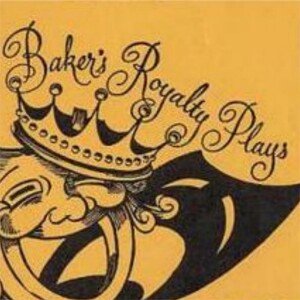
"Trifles" is a one-act play written by Susan Glaspell, first performed on August 8, 1916. Glaspell, an American playwright, novelist, and journalist, was born in 1876 in Davenport, Iowa. She is often recognized as a pioneering feminist writer and a major figure in the American theater. Before turning to fiction and playwriting, she worked as a reporter for the Des Moines Daily News, where her assignments included covering murder trials, among other events that appear to have influenced her literary work extensively.
"Trifles" is based on a real-life murder case that Glaspell reported on while working as a journalist. The 1900 case involved a woman named Margaret Hossack who was accused of murdering her husband. Glaspell's firsthand exposure to the case provided the inspiration for "Trifiles." In her play, she changed the names and details but kept the central theme of a woman suspected of killing her husband. Her experience and observations during the trial, particularly regarding the treatment of women and their often-overlooked lives and contributions, strongly colored the themes of her play.
The play is set in rural America at the turn of the 20th century, a period during which women had very restricted roles in society and were often considered mere trifles by men. In "Trifles," the male characters, including the sheriff and the county attorney, are primarily concerned with finding incriminating evidence against Minnie Wright, the woman accused of killing her husband. They overlook domestic items and spaces, considering them inconsequential—or mere "trifles"—unimportant in the larger scheme of legal and serious matters.
In contrast, the female characters, Mrs. Hale and Mrs. Peters, who accompany their husbands to the crime scene, notice and interpret the significance of these "trifles." They see them as telling details of the accused woman's life, offering insights into her emotional state and potential motive for the crime. Their observation and interpretation of these trivial details ultimately lead them to solve the case in their minds, highlighting women's perceptual and empathic abilities—qualities that are grossly undervalued by their male counterparts.
The genesis and themes of "Trifles" reflect Glaspell's critique of gender disparities, especially how society undervalues women's roles and intellect. It underscores her call for a deeper acknowledgment of women’s contributions both inside and outside the home. "Trifles" is considered one of Susan Glaspell’s most important works and remains a powerful piece of feminist literature, revealing the significant yet often unnoticed labor that women contribute to society. The play is also a critical commentary on how the justice system and societal perspectives overlook or misinterpret women’s experiences and realities.
Chapter 2 Analysis of Main Characters and Plot"Trifles" by Susan Glaspell is a one-act play focusing on the murder investigation of John Wright. The key characters are:
- Mrs. Hale and Mrs. Peters: The two main female characters who accompany their husbands to the Wrights' farmhouse, where the murder took place. They are initially considered trivial by the men but prove central to unravelling the mystery.
- Mr. Hale: A neighbor who discovered John Wright's dead body. He recounts the events of his visit to the house on the day of the murder.
- Sheriff Peters and the County Attorney: Represent the law enforcement side of the story, investigating the crime scene for evidence to explain or solve the murder.
The plot revolves around the investigation of John Wright’s murder, presumed to have been strangled by his wife, Mrs. Minnie Wright, who is also a key character but notably absent from the stage. Throughout the play, as the men look for solid evidence in obvious places (like around the house), Mrs. Hale and Mrs. Peters discuss Minnie Wright's life, deciphering subtle clues in the kitchen and living area—considered "trifles" by the men.
These "trifles" include a poorly stitched quilt, a broken birdcage, and a dead canary with a broken neck, hidden in Mrs. Wright's sewing box. These clues lead Mrs. Hale and Mrs. Peters to understand Minnie’s possible motive—emotional and psychological abuse symbolized by the strangled bird, akin to Mrs. Wright's suffocated spirit. The women, empathizing deeply with Minnie’s plight and subjugated life, choose to hide the evidence (the dead canary) in a gesture of solidarity, affecting the course of the investigation.
The play explores themes of gender roles, isolation, and the extent of empathy, positioning the female characters as more perceptive investigators of the social and personal contexts behind the crime, challenging the men’s dismissive attitudes and the broader societal undervaluation of women's perspectives.
Chapter 3 Theme Exploration and Analysis"Trifles" by Susan Glaspell is a one-act play first performed in 1916. It explores themes of gender roles, isolation, and the nature of truth through the investigation of a mysterious death in a rural farmhouse. Let's dive deeper into some specific themes and topics explored within the play:
- Gender Roles and Sexism: One of the central themes of "Trifles" is the difference in perspective between men and women, and how this shapes their roles in society. The male characters, including the sheriff and the county attorney, dismiss the women characters as concerned with minor or trivial matters (thus the title "Trifles"). The men believe that the women should be confined to the domestic sphere and are incapable of understanding serious issues, like the investigation of the crime. This underestimation leads the men to overlook crucial evidence, which the women notice because of their attention to domestic details. The play criticizes this patriarchal viewpoint and highlights the women's empathy and insight, which prove to be more effective in understanding the motive behind the crime.
- Isolation and Loneliness: The setting of "Trifles" is a remote farmhouse, and this physical isolation reflects the emotional isolation of its inhabitants, particularly Mrs. Wright, the main suspect of the murder. Through the details noticed by the women—such as the unfinished tasks, the lack of children, and Mrs. Wright's old and dirty clothing—it becomes apparent that Mrs. Wright suffered intense loneliness and a lack of emotional connection both in her marriage and in the community. This theme examines how isolation can lead to desperation, with tragic results.
- Justice and Law: The play raises questions about the nature of justice and its relationship to gender. While the men focus on legal proceedings and the search for concrete evidence, the women understand the emotional and psychological reasons behind Mrs. Wright's presumed acts. Here, Glaspell suggests that justice is not merely a matter of legal truth but also of understanding human motives and circumstances. The women's decision to hide the evidence (the dead bird) can be seen as an act of protecting one of their own out of a deeper moral sense, thus raising a question about what is truly just.
- Empathy and Solidarity: The women in the play, Mrs. Hale and Mrs. Peters, gradually develop a shared understanding and empathy for Mrs. Wright once they realize the extent of her oppressive situation. This solidarity among women contrasts starkly with the competitive and judgmental attitude displayed by the men. The play suggests that empathy and shared experiences can lead to a form of justice and support that institutional law does not provide.
- Symbolism and Setting: Glaspell uses various symbols to deepen the play’s themes. The setting of a cold, disordered kitchen symbolizes Mrs. Wright’s disturbed state of mind and her crumbling marriage. Items like the broken birdcage and the dead canary symbolize Mrs. Wright's loss of freedom and her silenced voice, respectively. The knotting of a quilt becomes a metaphor for plotting a crime or perhaps the untying of Mrs. Wright's bonds to an oppressive husband.
In examining these themes, "Trifles" by Susan Glaspell provides a critique of early 20th-century gender dynamics, advocating for a more nuanced understanding of women’s lives and insights. The play champions women’s ability to sympathize and unite under oppressive circumstances, and subtly criticizes the judicial system's failure to acknowledge this potential.
Book https://www.bookey.app/book/trifles
Author https://www.bookey.app/quote-author/susan-glaspell
YouTube https://www.youtube.com/watch?v=qVIrdDHLRPU
Amazom https://www.amazon.com/-/zh/dp/1494891220
Goodreads https://www.goodreads.com/book/show/1033755.Trifles?from_search=true&from_srp=true&qid=AFqJZqI3q1&rank=1
More Episodes
 2024-07-31
2024-07-31
 37
37
 2024-07-30
2024-07-30
 16
16
 2024-07-29
2024-07-29
 14
14
 2024-07-26
2024-07-26
 21
21
 2024-07-25
2024-07-25
 25
25
 2024-07-24
2024-07-24
 16
16
 2024-07-23
2024-07-23
 17
17
 2024-07-23
2024-07-23
 31
31
 2024-07-22
2024-07-22
 25
25
 2024-07-22
2024-07-22
 14
14
Create your
podcast in
minutes
- Full-featured podcast site
- Unlimited storage and bandwidth
- Comprehensive podcast stats
- Distribute to Apple Podcasts, Spotify, and more
- Make money with your podcast
It is Free
- Privacy Policy
- Cookie Policy
- Terms of Use
- Consent Preferences
- Copyright © 2015-2024 Podbean.com






